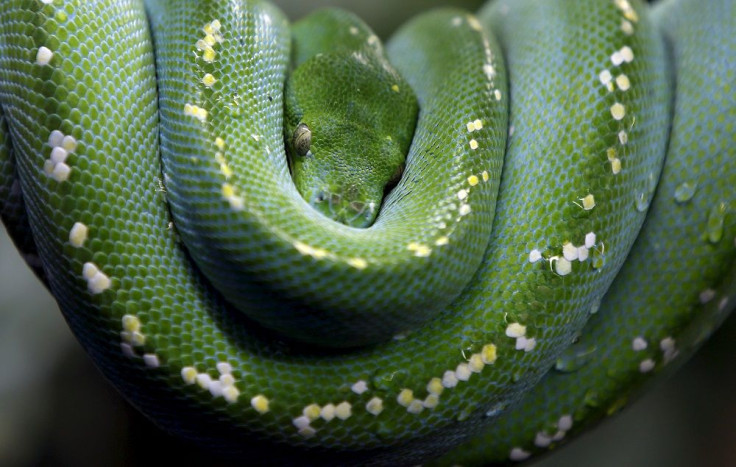Snake in North Queensland swallows an entire dead kangaroo

Visitors to a family caravan park in Cooktown in North Queensland, Australia, witnessed an amethystine python devour a dead kangaroo entirely. When the travelers chanced upon the snake, the kangaroo was hanging from its mouth.
A visitor, Helen Smart, filmed the incident when she spotted the amethystine python at the back of her caravan. The hungry reptile slowly disjointed its body to take in the marsupial’s carcass. Smart filmed the snake while it was already taking its meal. Just 90 seconds into her filming, what could only be seen of the roo in the 2-minute, 22-second video is its tail sticking out the mouth of the python, reports Yahoo News.
In New South Wales, resident Rainbow Sabi saw on her porch a snake eating her pet parrot, reports Mercury Press. However, since a parrot is considerably smaller than a kangaroo, there was no bump on the snake’s body after it devoured Polly.
The ability of snakes to swallow large animals and even humans is because of its flexible jaws. Live Science explains that the reptile’s head has tendons, muscles and ligaments that makes its jaw as flexible as a gymnast.
But Patrick Gregory, a biology professor at the University of Victoria, corrects myths that the snake’s jaw detach for it to devour large creatures. He says the two lower jaws move independently of one another since the quadrate bone is not rigidly connected to the skill, although it articulates with the skull at one end and moves freely. An elastic ligament allows the snake’s jaw to spread apart.
As to how the snake digests the whole animal, The Naked Scientists, in a forum, explains that the reptile has special cells capable of breaking down even the most complex parts of an animal, including the bones. The cells are shaped like golf tees which are unique to snakes. After having ingested a large meal, snakes could go without eating again for at least one month.





















